Do I Know You From Somewhere?
Top 10 Best Legacy Boss Battles of All Time!
A lot of franchises feature recurring villains, but this list looks at unexpected boss fights that make direct reference to past encounters from earlier games. These boss battles are often optional, and players sometimes have to jump through hoops in order to unlock them. We’ve already explored cameo appearances and nostalgia levels on this website, and this list is cut from the same cloth.
10
Solid Arm
Illusion of Gaia
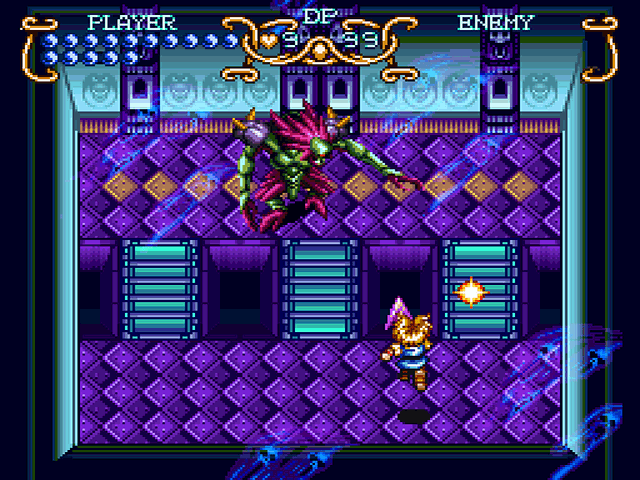
Illusion of Gaia was a follow-up to Soul Blazer, but the two games were only loosely connected to one another. One of the few things that directly tied the games together was an optional boss battle. Soul Blazer featured a demonic boss named Metal Mantis who could shoot fireballs from his mouth. He later appeared in Illusion of Gaia under the guise of Solid Arm. After his defeat in Soul Blazer, his power was apparently sealed away in jewels that were spread across the world. In order to bring about his resurrection, Solid Arm manipulated labor markets and used slaves to gather the jewels in question. This was a remarkably elaborate plan for a 16-bit game, and most villains of the era stuck to simple crimes like larceny or kidnapping. Solid Arm is more flexible in Illusion of Gaia than he was in his first outing, but he can still be defeated in the same manner. Players have to collect 50 jewels before they can fight him, however, so the real trick is unlocking the boss battle in the first place.
9
The Butcher
Warcraft III

The Butcher is an optional boss from Warcraft III that was originally seen in Diablo. Although the games were both developed by Blizzard Entertainment, they were not directly linked to one another. That being said, the Butcher is basically the same in both games. In either outing, he’s depicted as an imposing monster with a giant clever who’s excited by the prospect of fresh meat. Regardless of the game he’s in, it’s apparent that the sadistic creature derives pleasure from the pain of others. In Warcraft III, the abomination guards an item called “Wirt’s Other Leg.” This is a specific reference to an overzealous, peg-legged adventurer named Wirt who was dismembered by the Butcher prior to the events of Diablo. The games take place in different continuities, so the Butcher from Warcraft III is basically an elaborate homage to the original. He deserves recognition on this list in any regard, and I always appreciate a good in-joke.
8
Karstaag
The Elder Scrolls V

Frost giants are reclusive creatures that can be found in frozen areas of Tamriel. They stand nearly 12 feet tall and are defined by their sharp claws and massive horns. They are also fiercely territorial, and they will not hesitate to lash out if they feel threatened. Karstaag was an especially powerful frost giant who was first seen in The Elder Scrolls III. After he was slain, he re-emerged in the Dragonborn expansion of The Elder Scrolls V. In this outing, Karstaag could be challenged in battle after his skull was located. He was imposing enough when he was still alive, but he was even more powerful as a ghost. His spectral form made him completely immune to many attacks, but he could still cause damage with his club, fists, and an immensely powerful stomp attack. Karstaag is one of the toughest bosses in the game, but he can become a powerful ally after he’s vanquished. As a reward for defeating Karstaag, players gain the ability to summon the beast to fight on their behalf. He’ll only stick around for a couple of minutes and will become hostile if he’s attacked, but it’s a cool party trick nonetheless.
7
Guts Man G
Mega Man 7

You can expect to see many familiar enemies in a typical Mega Man game. Mega Man encounters entire armies of robotic foes during his adventures, and it’s safe to assume that new enemies are constantly being produced to replace the ones that are destroyed. Most of Mega Man’s enemies are basically disposable, but the Blue Bomber also has to contend with a number of advanced Robot Masters in each game. These Robot Masters are formidable opponents with unique personalities, weapons, and attack patterns. The Mega Man series is defined by Mega Man’s ability to gain new powers by defeating these bosses, so it’s imperative that each game in the series features a new cast of Robot Masters to contend with. Mega Man 7 broke convention with the inclusion of the Robot Museum. This facility housed the Robot Masters that had been defeated in previous Mega Man games, and a major plot device involved Dr. Wily breaking into the museum in order to steal Guts Man. Guts Man was one of the Robot Masters from the original Mega Man, and Dr. Wily must have thought the he was pretty special. After stealing Guts Man, Dr. Wily modifies the robot and tasks him with guarding the first stage of his castle. The visit to the Robot Museum was like a trip through memory lane, and the battle with Guts Man G was a respectful nod to the game that started it all.
6
Gilgamesh
Final Fantasy XII

Gilgamesh is a recurring character in the Final Fantasy series who has been both an ally and an enemy. He was presented as an incompetent warrior during his debut in Final Fantasy V, but he has become a lot more powerful over time. His role varies from one appearance to the next, but he’s usually depicted as a traveling sword collector who’s armed with a variety of weapons. Although he has appeared in many games, Final Fantasy XII was only the second time Gilgamesh was encountered as a boss character. On that note, his appearance in Final Fantasy XII had many allusions to Final Fantasy V, and he was defined by the same attacks and personality quirks. Although he was somewhat more menacing in this outing, he was still a source of comic relief. It’s easy to laugh at the guy, but his collection of replica swords from past Final Fantasy games is pretty impressive. His apparent ability to open dimensional gateways is also worth noting. The guy couldn’t care less about the continuity of the Final Fantasy series.
5
Kraid
Super Metroid

There are many recurring bosses in the Metroid series. I could have mentioned the rematch with Mother Brain or the unexpected appearance of Phantoon in Metroid: Other M, but Kraid’s appearance in Super Metroid was especially effective in highlighting how the series had evolved. For the uninitiated, Super Metroid is set in the same place as the original Metroid. Many of the environments, enemies, and power-ups from the first game were reexamined in Super Metroid, so its only natural that the original boss characters were revived as well. One of the bosses in the first Metroid was a dragon-like creature named Kraid. There were multiple paths leading to Kraid, and players could even stumble upon a fake version of him along the way. A fake Kraid also appears in Super Metroid, but there’s a new twist this time around. In the original Metroid, Kraid was roughly the same size as Samus and his impostor was nearly identical to him. In Super Metroid, the fake Kraid is slightly larger than Samus but considerably smaller that the real version. The real Kraid is too large to fit on the screen, and his size is accentuated by his diminutive impostor. He stands as one of the most imposing bosses of the 16-bit era, and I admire the clever use of misdirection leading up to his appearance.
4
Dracula
Castlevania: Symphony of the Night

The plot of Castlevania: Symphony of the Night revolves around the disappearance of Richter Belmont (who had previously bested Count Dracula at the end of Dracula X: Rondo of Blood.) Symphony of the Night is set four years after the events of its predecessor and follows a new protagonist, but the prologue of the game ties everything together with a recap of Rondo of Blood. Instead of a mundane summary, Symphony of the Night lets you replay the events of the previous game. Players assume the role of Dracula’s son Alucard during the adventure, but the game kicks off with Richter’s fight against Dracula from the end of Rondo of Blood. (It’s not possible to lose this battle, but players will be rewarded with higher starting stats if they defeat Dracula in a convincing fashion.) Needless to say, it’s pretty unusual to see a final boss from a game re-imagined as the first enemy in the sequel. It’s stands as one of the most memorable openings to any game, and the recap was especially appropriate since Rondo of Blood hadn’t yet been released outside of Japan.
3
Meka Dragon
Wonder Boy III: The Dragon’s Trap

Like Symphony of the Night, Wonder Boy III begins by revisiting the last boss battle from its immediate predecessor. (For what it’s worth, the reason why Wonder Boy III is ranked higher on this list is because it predates SotN by eight years.) After defeating Meka Dragon at the end of Wonder Boy in Monster Land, players were given an ominous warning that the future would be even more dreadful. It wasn’t apparent at the time, but poor Wonder Boy was apparently cursed by the dragon during their battle and was transformed into a lizard creature immediately after their fight. They could have simply explained everything with a single line of text, but the developers went above and beyond by letting players partake in the battle that caused the curse. The Wonder Boy series is chronologically confusing, and the games weren’t always connected to each other in a cohesive manner. If nothing else, it was nice to finally play a Wonder Boy game that was directly tied to the one that preceded it.
2
Mean Bean Machine
Sonic Mania

It’s not unfair to say that the Sonic series has been wildly inconsistent, and many games in the legendary franchise have been rightly panned by fans and critics alike. Sonic Mania managed to avoid most of the pitfalls that modern Sonic games fall into, however. Produced in commemoration of the series’ 25th anniversary, Sonic Mania looked, sounded, and felt like the 16-bit Sonic games of yesteryear. References to past Sonic levels and scenarios could be found around every corner, but there was one throwback that caught me off guard. In 1993, Sega released a modified version of Puyo Puyo called Dr. Robotnik’s Mean Bean Machine. Naturally, the game replaced the original characters with ones from the Sonic series. Mean Bean Machine played just like the classic “falling blobs” puzzle game that inspired it, but the Sonic makeover made it more palatable for western audiences. The most interesting boss in Sonic Mania saw our heroic hedgehog being forced to battle his nemesis in the aforementioned Mean Bean Machine. This unexpected boss fight played out exactly like a round of Dr. Robotnik’s Mean Bean Machine, and it would be akin to Mario challenging Bowser to a round of Dr. Mario in a proper Mario platformer. Sonic Mania was fueled by nostalgia, and it was nice that this nostalgia extended to Sonic spinoff titles.
1
Donkey Kong
Super Mario Odyssey

The most memorable level in Super Mario Odyssey is a modern city with skyscrapers, taxi cabs, and other landmarks you’d expect to see in the real world. New Donk City, as it’s called, is filled with references to the Donkey Kong series. Streets are named after Donkey Kong characters, billboards feature artwork from the original Donkey Kong arcade game, and Pauline serves as the mayor of the city. (Pauline was the first damsel in distress that Mario ever rescued, so it was nice to see that she was doing so well.) During his visit, Mario has the opportunity to participate in a festival commemorating the history of the city. While Pauline and her band entertain the crowd with an upbeat jazz number, Mario takes the form of an 8-bit sprite and works his way through a 2D platforming section. Mario runs across familiar girders and jumps over runaway barrels before finally encountering Donkey Kong himself. The great ape looks exactly like he did in the original 1981 arcade game, and this makes the entire scene even more nostalgic. I can’t believe that Pauline organized a festival that culminated with the public execution of her captor, but I’m glad she did. Remarkably, this was the first time Mario ever fought Donkey Kong outside of the Donkey Kong series.

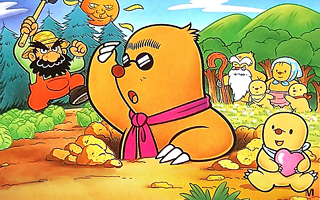
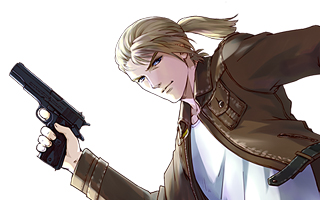
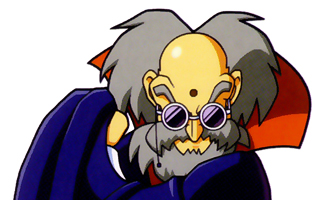
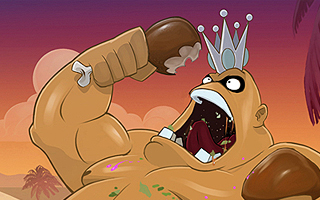
Do you agree with this list? Let us know what you think by leaving a comment below. Your opinion matters!